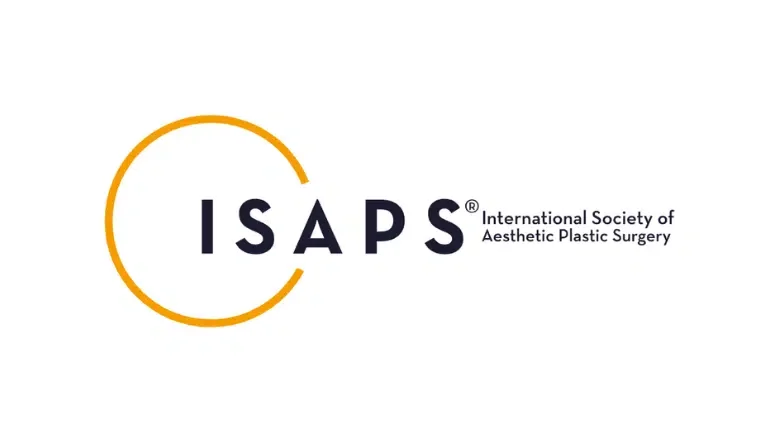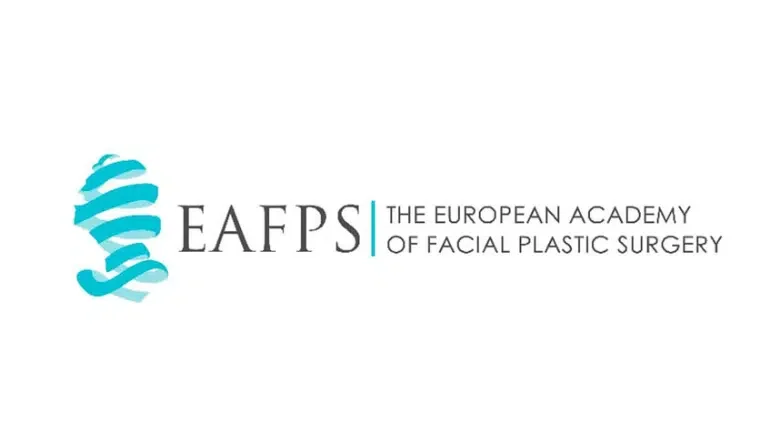Droopy eyelids are also known as eyelid ptosis. This condition involves the eyelids sagging so that they may cover part of the eyes. Ptosis of the eyelids can affect one eye or both eyes. The severity of eyelid ptosis varies significantly between people, although the condition is not known to cause pain or discomfort. Droopy eyelids are distinct from hooded eyelids, which are not associated with visual impairment.
RELATED: What are hooded eyes?
Most cases of eyelid drooping are mild in nature and may not be noticeable to others. In severe cases, drooping of the upper eyelid can be severe enough to obscure vision by blocking the eye. Disturbance to vision will vary depending on how much of the eye is covered by droopy eyelids. Severe eyelid ptosis may result in people having to adjust the position of their heads to enable clear vision. Tilting the head backwards may occur in severe cases and may be noticed by others. The eyebrows may need to be raised to facilitate better vision. Some people may develop symptoms from having ptosis, including recurrent headaches, eye strain and brow pain from the continual raising of the brow to see clearly.
RELATED: Eyelid Surgery FAQs – Q&A about Blepharoplasty
Drooping eyelids are linked with the development of both dry eyes and excessively watery eyes. People may develop a localised ache affecting the eyes, and this may cause them to look more fatigued. Men and women can be equally affected by drooping eyelids, and the condition is prevalent in all ethnic groups. The condition is rare in children and most commonly affects older adults. Sometimes, the condition may be temporary but eventually become permanent. Eyelid ptosis can be caused by traumatic injury, certain medical conditions or the natural ageing process. Genetics can also be a cause of congenital ptosis leading to the condition being present from birth. In many cases, eyelid drooping is a cause for cosmetic concern. In some people, the condition may be related to an underlying medical condition, and it is sensible to have a clinical assessment from a specialist ophthalmologist. We recommend avoiding driving a car if drooping eyelids significantly affect your vision. Once the condition has been treated, driving may be safe. Although many treatments are claimed to improve the appearance of drooping eyelids, only eyelid surgery or ptosis surgery is effective for getting rid of droopy eyelids.
RELATED: What are the benefits of eyelid surgery?
What are the causes of eyelid ptosis?
Drooping eyelids occur most commonly in older age groups due to the natural ageing process. It can, however, occur in anyone, including children. With age, the muscles that raise the eyelids become stretched and weakened. The eyelids then begin to drip. In congenital ptosis, the levator muscle has failed to develop correctly, leading to the appearance of ptosis. In long-standing uncorrected cases of eyelid ptosis in children, the condition of amblyopia, otherwise known as a lazy eye, may occur.
RELATED: Heavy Eyelids – Causes & Treatments
Some people may as a matter of habit, rub their eyes excessively, and this is linked to the development of droopy eyelids. We recommend avoiding habitual eye rubbing to prevent this from occurring. People with a hayfever allergy should take antihistamine tablets to reduce the likelihood of rubbing their eyes, resulting in localised inflammation and the possible development of droopy eyelids.
Certain medical conditions may increase the risk of developing droopy eyelids. Localised soft tissue infections such as styes may result in eyelid drooping on one side. Other causes include traumatic injury to the delicate supporting structures surrounding the eye. There are certain nerves which supply the eyelid muscles, and if these are damaged as a result of disease or injury, then eyelid drooping may occur.
Cataract surgery and laser eye surgery are increasingly popular procedures in the UK, and treatment may result in stretching of the eyelid, leading to eyelid drooping. The development of an eyelid droop can also be caused by potentially life-threatening conditions, including cancer, ischaemic strokes and brain tumours. Although rare, tumours affecting the eye can result in ptosis. Conditions of the neuromuscular junction, such as myasthenia gravis or Eaton-Lambert syndrome, may cause generalised muscle weakness affecting the whole body, including the eyelids, resulting in eyelid ptosis. The best way to determine the cause of drooping eyelids is to have a clinical assessment by a consultant eye specialist.
What are the symptoms of droopy eyelids?
The main symptom of a droopy eyelid is sagging skin on the upper eyelid that hangs over the eyelashes. This can affect the appearance of the eye and make it difficult to apply makeup. Other symptoms include a tired appearance, eyelid irritation, dry eyes, headache, and reduced peripheral vision.
While droopy eyelids are usually not a serious health risk, severe cases can interfere with vision and make activities like driving dangerous. If you experience significant vision impairment due to a droopy eyelid, it is essential to seek medical attention to correct the issue.
Are there any non-surgical options for eyelid ptosis correction?
Our surgeons commonly get asked whether eyelid ptosis can be corrected without the need for a surgical procedure. Sadly, we are unable to recommend any non-surgical options for ptosis treatment. Several types of eye lift creams available online claim to reduce eyelid drooping by tightening the eyelids. None of these products has any proven effectiveness. There are no facial exercises which are recommended to improve ptosis. The best treatment for drooping eyelids is eyelid reduction surgery performed by a specialist plastic surgeon.
Although many treatments promoted online claim to get rid of droopy eyelids without surgery, none have been proven to be effective and, in all cases, are a significant waste of money. Common examples of products include vitamin supplements and eye patches. The key to effective ptosis is to treat the condition’s underlying cause. In certain cases, there may be a medical condition responsible. Treating the underlying medical condition, such as a neuromuscular condition, may help improve eyelid ptosis without surgery. Some people, particularly men, may have a particularly thick set brow, which causes eyelid ptosis. Often, the best treatment would be injections of neuromodulators, which eliminate the need for invasive surgery.
RELATED: How to Fix Drooping Eyebrow
What are the benefits of droopy eyelid surgery?
Ptosis surgery is suitable for a wide range of people keen to improve their eyelid appearance. Benefits of ptosis surgery include:
- Achieving symmetrical-looking eyes.
- Improvement of vision enables many everyday tasks to be carried out much more easily.
- Increased youthfulness and a refreshed look
- Getting rid of tired-looking eyes.
- Improvement in functional symptoms such as eye strain, dry eyes and watery eyes, headaches and brow aches.
- A significant boost in self-confidence and emotional well-being.
- Ability to carry out tasks independently without needing help from others.
- Ptosis surgery is the definitive treatment for drooping eyelids.
- A safe and effective procedure which takes no more than 90 minutes to carry out.
- Minimal risk of complications.
Am I suitable for blepharoplasty?
Blepharoplasty for ptosis correction is ideal for patients who want to get rid of drooping eyelids to improve cosmetic appearance or relieve functional symptoms such as visual impairment. We would highly recommend surgical correction if your vision has been affected and you are unable to carry out everyday activities such as driving a car or performing visually intensive tasks.
Surgery for eyelid ptosis affecting one eye only is commonly performed for patients in their 20s and 30s. Drooping eyelids in older adults due to the natural ageing process is most commonly performed in people in their 50s and above. Although droopy eyelid surgery is an effective treatment for affected children, at the Centre for Surgery, we do not carry out consultations or procedures for anyone under 18.
Fix Droopy Eyelids with Hooded Eye Surgery
The best way to treat eyelid ptosis is with corrective eyelid surgery. Eyelid reduction surgery, or blepharoplasty, is a permanent correction method for ptosis. Blepharoplasty surgery involves the surgical excision of loose skin and redundant fat pads from the area of the upper eyelids. The muscles are effectively tightened, which helps to impart a more youthful look to the overlying skin.
RELATED: What Is An Upper Blepharoplasty?
Once you have been admitted for the procedure, you will be taken to the operating room. Once you are lying comfortably, the surgeon will apply topical local anaesthetic drops to your eyes. The area of treatment will then be cleaned and draped with sterile sheets. The surgeon will carefully mark the areas for skin removal with a skin marker pen. A local anaesthetic will then be injected into the eyelids. Eyelid surgery takes no more than 60 minutes per eye to carry out. Although the area will be numb, it is normal to experience minimal pulling and tugging during the procedure while the surgeon operates on the eyelids.
RELATED: What Does Eyelid Surgery Involve?
Once the procedure is complete, the incisions are expertly closed with non-dissolvable stitches. An antibiotic ointment will be applied to the incision lines, followed by a sterile dressing. Once you are medically fit for discharge, you can go home with a responsible adult caregiver. Recovering in the comfort of your own home reduces the risk of postoperative complications, including infection.
Eyelid surgery is associated with very little discomfort, although over-the-counter painkillers will be sufficient to control any pain. Blepharoplasty results can transform patients’ lives, and our surgeons focus on achieving natural-looking results. Eyelid surgery techniques have developed significantly over the last ten years, with more emphasis being placed on preservation techniques to reduce side effects and risks. The results of droopy eyelid surgery can be considered permanent, although in rare cases, patients may require a minor adjustment procedure to fine-tune the results. Many patients choose to combine ptosis surgery with other complementary facial procedures, including a brow lift, to enhance the results.
How long does blepharoplasty recovery take?
We recommend being at home for at least 72 hours after droopy eyelid surgery. Patients can return to work after one week. You should avoid direct sunlight exposure for at least three weeks to avoid any adverse effects on healing. You should avoid rubbing the area of surgery to prevent irritation. Going to the gym and swimming should be avoided for at least four weeks after surgery. If you are a smoker, we recommend quitting smoking as the healing process can be affected, and an increased risk of complications is more likely, including wound infection. Any risk of complications can be minimised by following all of the postoperative aftercare instructions given to you by your surgeon. Following these instructions in full will help to get the best possible recovery after blepharoplasty.
RELATED: How Long Is Blepharoplasty Recovery?
What do blepharoplasty scars look like?
Blepharoplasty is associated with minimal scarring as the incisions are often well positioned within natural skin folds. The blepharoplasty scars are barely noticeable when they are placed within the upper eyelid skinfold so that anyone will not be able to see any scarring. You will need to be reviewed one week after your procedure by one of our nursing team. Your incisions will be reviewed, and customised recommendations will be given to improve the appearance of blepharoplasty scarring.
RELATED: What Do Blepharoplasty Scars Look Like?
When will I see the blepharoplasty results?
Any surgical procedure, including blepharoplasty, results in a mild degree of bruising and swelling that will disappear after four weeks. In some cases, bruising and swelling may take up to 3 months to settle down completely, depending on the extent of surgical correction for droopy eyelids. Drooping eyelid surgery is a permanent treatment to get rid of eyelid ptosis. The natural ageing process may mean that a small degree of eyelid droopiness may return over time. There are several effective treatments to address this when required. Whether future treatment is required or not will depend on the severity of the initial eyelid drooping.
How much does blepharoplasty cost?
Blepharoplasty Surgery at Centre for Surgery starts at £2995 for upper eyelid surgery under local anaesthetic. If you prefer a general anaesthetic, treatment prices start from £3495. An accurate quotation will be given to you once you have had your face-to-face consultation with your surgeon. We offer the full range of finance options, including 0% finance for eligible patients, through our specialist finance partner, Chrysalis Finance. Chrysalis Finance specialises in medical finance for a wide range of cosmetic surgery procedures.
RELATED: How Much Does a Blepharoplasty Cost in London? – Eyelid Surgery Prices
You will be allocated a dedicated patient coordinator to act as your personal point of contact throughout your patient journey with us at Centre for Surgery in London.
DROOPY EYELIDS FAQS
What is ptosis of the eyelid, and what causes it?
Ptosis is a condition that occurs when the muscles used to raise the eyelid weaken or stretch, causing the eyelid to droop or lower than normal. This can affect one or both eyes and has several potential causes, including ageing, fatigue, injury, and neurological conditions.
Am I suitable for eyelid surgery, and what procedures are available?
You may qualify for eyelid surgery if you have excess skin and/or fat around your upper and/or lower eyelids, or if your vision is affected by upper eyelid droopy skin. Procedures to fix these issues include upper blepharoplasty for the upper eyelid and lower blepharoplasty for the lower eyelid.
What are the potential complications of eyelid surgery, and how long do the results last?
The most common complications from eyelid surgery are bleeding and infection, and other potential complications include asymmetry, scarring, and skin numbness. Results from eyelid lift surgery are long-lasting and can last more than five years, but the procedure cannot prevent future signs of ageing.
Is eyelid surgery covered by the NHS?
Eyelid surgery is covered by the NHS if an ophthalmologist determines that the eyelid skin is obstructing vision. However, purely cosmetic surgery is not covered, and waiting lists for treatment can be very long.
Why choose Centre for Surgery for blepharoplasty surgery?
Centre for Surgery is the leading cosmetic surgery clinic in London. Our surgeons have years of experience performing all types of eyelid surgery, including ptosis treatment for drooping eyelids. Our state-of-the-art Baker Street clinic is located in Marylebone, Central London and is easily accessible via all methods of public transport. If you would like to learn more about droopy eyelid surgery, please get in touch with us today at 020 7993 4849 or complete the contact form below to book a personal consultation with an eyelid reduction specialist surgeon.













